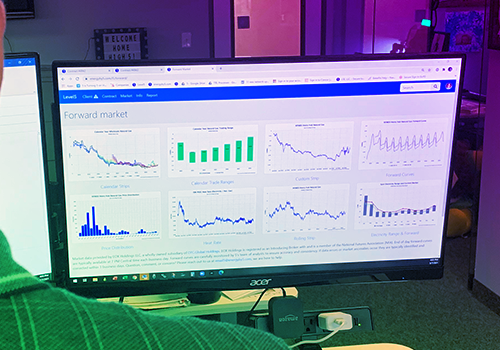
Hurricane season officially began this month and in a report at the end of May, NOAA predicted between 17 and 25 named storms for the period between June 1 and November 30. According to NOAA, “The upcoming Atlantic hurricane season is expected to have above-normal activity due to a confluence of factors, including near-record warm ocean temperatures in the Atlantic Ocean, development of La Nina conditions in the Pacific, reduced Atlantic trade winds and less wind shear, all of which tend to favor tropical storm formation.” It is only three weeks into hurricane season and Tropical Storm Alberto has already pounded Mexico and parts of Texas with torrential rain and flooding. Many clients ask how hurricane and tropical storm activity affect energy prices. In the past, significant hurricane activity in the Gulf of Mexico had a major impact on natural gas prices. In the 1990’s, hurricane tracking was one of the most important fundamentals energy traders watched. The destructive capabilities of a powerful hurricane in the Gulf of Mexico heading towards the large production regions (Corpus Christi TX to Mobile AL) would cause drilling and production platforms in the Gulf to evacuate their personnel, typically requiring the well to be closed. This would result in a dramatic reduction in the amount of natural gas produced for a week or more if there was substantial damage to the platforms. As shown in Figure 1, the highest natural gas prices in the last thirty years occurred in the wake of Hurricanes Rita and Katrina in 2005. Both storms caused major disruptions to the production and flow of natural gas.

Figure 1. Long-Term Historical Wholesale Natural Gas prices, by 5
Today, hurricanes are less likely to increase energy prices. The advent of horizontal drilling and hydraulic fracturing has provided access to major onshore shale reserves that were not accessible in the early 2000s. Over the last twenty years, natural gas from the Marcellus and Utica shale formations in the Appalachian Region and in multiple locations throughout Texas has greatly outpaced the amount of natural gas from offshore platforms in the Gulf of Mexico. Note that in January 2006 (See Figure 2), most natural gas supplies came from offshore platforms in the Gulf of Mexico (GOM). Beginning in 2010, onshore supplies from the Utica, Marcellus, Permian, Haynesville, and Barnett/Eagle Ford reserves became the dominant source of domestic natural gas.
 Figure 2: Avg Daily Shale Gas Production by Play Graph, by 5
Figure 2: Avg Daily Shale Gas Production by Play Graph, by 5
Ironically, major hurricanes today are more likely to push energy prices down. This counterintuitive thinking is due to lower energy demand in the immediate wake of a major storm. Hurricane Harvey hit the Texas coast on August 25, 2017, near Corpus Christi. Figure 3 shows the total daily electricity usage for the state of Texas for the summer of 2017. The typical usage prior to Harvey’s landfall was about 1.25 million MWh per day. Two days later, on August 27th, daily usage fell by almost 30% to 900,000 MWhs per day. This amount of electricity usage was close to an average of 2 Bcf per day of gas consumption for the week of August 25th through the 30th, assuming the majority of that electricity supply came from natural gas-fired power plants.
 Figure 3: Daily Texas Electricity Load Graph, by 5
Figure 3: Daily Texas Electricity Load Graph, by 5
The shaded area in Figure 3 shows the reduction in electricity usage during the 3.5 weeks following Hurricane Harvey’s landfall. This corresponds to approximately 35 Bcf of natural gas that was not burned to produce electricity – and that is only in Texas. The remnants of Harvey, which degraded into a tropical storm, also decreased electricity usage and demand for natural gas as it moved across the country.
Today, given that most domestic natural gas comes from onshore reserves, the drop in natural gas demand after a storm is much larger than any decrease in gas production from the Gulf of Mexico. Accordingly, a significant hurricane is more likely to lower electricity demand than reduce the supply of natural gas and electricity. This means that today, a large disruptive hurricane will likely be bearish and put downward pressure on natural gas prices because of abundant onshore shale reserves and the demand destruction that is likely to follow in the aftermath of a major storm. How times have changed.




